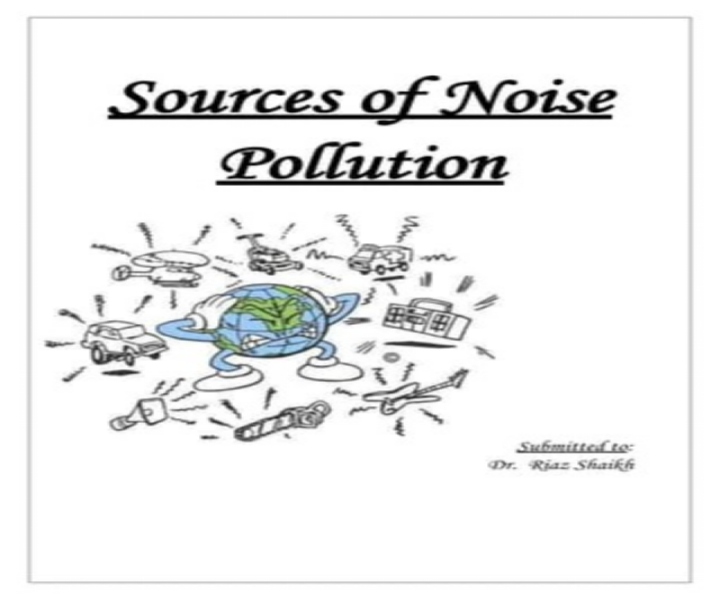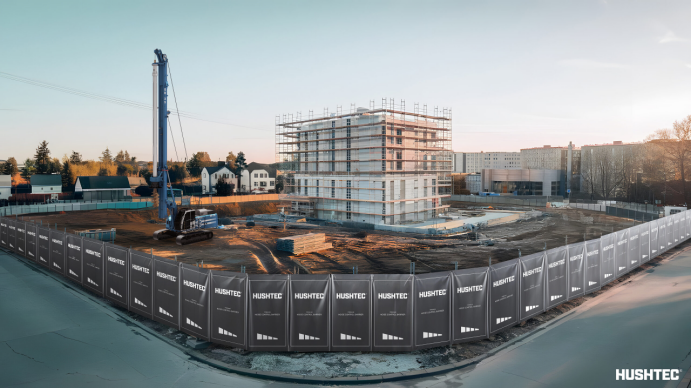As cities worldwide expand and populations grow, urban environments become increasingly dominated by sound. From the constant hum of traffic to the clamor of construction sites and the buzz of social activity, urban soundscapes are evolving into an almost inescapable presence. Noise pollution, characterized by unwanted or harmful sounds produced by human activity, is one of today’s most pervasive and underestimated environmental issues. Unlike air or water pollution, noise pollution is invisible and intangible, often making it harder to recognize and address. However, its effects are far-reaching, profoundly impacting human health, community well-being, and natural ecosystems. The World Health Organization (WHO) has identified noise pollution as a serious public health risk, linking it to a range of issues such as hearing loss, cardiovascular disease, and mental health disorders. In addition, chronic noise exposure disrupts sleep patterns and reduces overall quality of life, especially in densely populated urban areas.
Beyond its toll on human health, noise pollution is a significant ecological disruptor. Urban noise interferes with wildlife communication, mating behaviors, and migration patterns, often forcing animals to adapt in ways that threaten their survival. Biodiversity in urban areas suffers as species sensitive to sound are driven away, while others struggle to cope with the continuous intrusion of human-generated noise.
The issue is further compounded by the inequitable distribution of noise exposure. Marginalized communities, often residing in areas near highways, industrial zones, or airports, bear the brunt of urban noise pollution. This disparity highlights the environmental justice dimensions of the problem, as these communities face heightened risks to their health and living conditions.
With global urbanization showing no signs of slowing down, the challenges posed by noise pollution are set to intensify. Addressing this issue requires a holistic approach that combines innovative urban planning, strict regulatory frameworks, technological advancements, and public awareness campaigns. Reducing noise pollution is not only critical for creating healthier and more livable cities but also for fostering a sustainable coexistence between urban development and the natural environment.
By understanding the complexity and urgency of noise pollution, cities can begin to transform their soundscapes into spaces that prioritize well-being, equity, and ecological harmony. In this context, tackling noise pollution is not just a technical challenge—it is a critical component of sustainable urban development.
1. The Growing Problem of Urban Noise
A. Sources of Noise Pollution
Noise pollution arises from various anthropogenic activities, with urbanization and industrialization driving its prevalence. The main sources include traffic noise, industrial and construction noise, and social and recreational noise. Each source contributes uniquely to the growing noise levels in cities worldwide.
I. Traffic Noise
Traffic noise is the dominant contributor to urban soundscapes, with vehicles, trains, and airplanes generating a consistent hum that invades daily life.
Key Statistics (2023):
According to the World Health Organization (WHO), road traffic accounts for 70-80% of urban noise pollution.
Ø In Europe, approximately 113 million people are exposed to harmful noise levels above 55 dB due to road traffic.
Ø Noise from highways can reach 75-80 dB in nearby residential areas, well above the recommended limits for human health.
Breakdown by Transport Mode (Global):
|
Source |
Noise Level (dB) |
Impact Radius(km) |
Population Exposed |
|
Cars&Motorcycles |
60-75 |
0.5 |
High (urban areas) |
|
Freight Trucks |
70-90 |
1.0 |
Moderate |
|
Trains |
80-95 |
1.5 |
Limited(near tracks) |
|
Airplanes |
80-105 |
10.0 |
Significant(airports) |
Noise from vehicles is exacerbated by poor infrastructure, traffic congestion, and lack of noise barriers.
II. Industrial and Construction Noise
With rapid urban development, industrial zones, and construction sites have become a constant source of loud and persistent noise.
Key Sources:
Ø Factories producing heavy machinery noise exceeding 90 dB.
Ø Construction sites where jackhammers, drills, and earth-moving equipment produce noise levels up to 120 dB.
Case Example: Construction Noise in Major Cities (2023)
|
City |
Average Construction Noise (dB) |
Peak Noise Levels (dB) |
Affected Population (%) |
|
New York City |
85 |
120 |
25 |
|
Mumbai |
90 |
130 |
40 |
|
London |
80 |
115 |
20 |
|
Beijing |
95 |
125 |
35 |
Industrial activities often overlap with residential areas, exposing workers and nearby communities to harmful levels of sustained noise.
III. Social and Recreational Noise
Intermittent but impactful, social and recreational activities also contribute significantly to urban noise pollution.
Examples:
Nightlife districts, where music and social gatherings can exceed 90 dB, disturb nearby residents.
Public events and festivals, often reaching 110 dB at peak moments.
IV. Recent Trends (2023):
Recreational Noise Complaints: In London, noise complaints from nightlife areas increased by 15% in the past year.
Sports Events: Stadium noise levels during matches can hit 115 dB, affecting neighborhoods within a 1-2 km radius.
The following figure illustrates typical noise levels across common urban sources:
|
Noise Source |
Typical dB Range |
|
Whisper in Quiet Room |
20-30 |
|
Normal Conversation |
50-60 |
|
Road Traffic |
60-75 |
|
Construction Site |
80-120 |
|
Jet Take off |
120-140 |
2. Global Distribution of Urban Noise Pollution (Map)
Using recent WHO data, urban noise “hotspots” are visualized, with areas exceeding the recommended limits of 55 dB marked:
Ø High-Risk Regions: India, China, and the United States.
Ø Moderate-Risk Regions: Parts of Africa and South America.
This detailed breakdown highlights the various sources contributing to urban noise pollution, emphasizing the urgent need for mitigation measures tailored to each source. Further discussions on health impacts, policy interventions, and global case studies can provide actionable insights into combating this invisible yet pervasive challenge.
3. Escalating Decibel Levels
Studies reveal that urban noise levels in many cities exceed the World Health Organization’s (WHO) recommended limit of 55 decibels for daytime noise. For example:
In New York City, average street noise often exceeds 85 dB.
In Mumbai, peak traffic hours push noise levels beyond 100 dB.
4. Disparities in Noise Exposure
Marginalized communities often face higher exposure to noise pollution, living near highways, industrial zones, or airports, exacerbating health disparities and environmental injustices.
5. Impacts of Noise Pollution
A. Human Health and Well-Being
I. Hearing Loss: Prolonged exposure to sounds over 85 dB can cause irreversible damage.
II. Mental Health Issues: Chronic noise contributes to stress, anxiety, and sleep disturbances.
III. Cardiovascular Problems: Noise pollution is linked to hypertension, heart disease, and stroke.
B. Impacts of Noise Pollution on Ecosystems
I. Terrestrial Ecosystems
Ø Altered Animal Behavior:
Noise pollution can force animals to change their natural behaviors, such as foraging, mating, and communication. For example, studies have shown that birds may avoid noisy areas, leading to reduced populations of sensitive species and the potential reshaping of local ecosystems by favoring more noise-tolerant species.
Ø Disruption of Communication:
Increased noise levels interfere with the ability of animals to communicate effectively. This is particularly critical during mating seasons when species like frogs and songbirds rely on sound to attract mates. Disrupted communication can lead to decreased reproductive success and population declines.
Ø Impact on Food Webs:
Changes in animal behavior due to noise can have cascading effects on food webs. For instance, if predators like bats experience decreased foraging efficiency near noisy roads, this can affect prey populations and overall ecosystem stability.
II. Marine Ecosystems
Ø Interference with Key Life Functions:
Many marine species depend on sound for navigation, communication, and hunting. Noise pollution from shipping, construction, and seismic surveys disrupts these acoustic signals, leading to altered behaviors in marine mammals such as whales and dolphins. For example, blue whales have been observed to stop feeding when exposed to sonar signals.
Ø Physiological Effects:
Prolonged exposure to underwater noise can cause stress responses in marine animals, potentially leading to physiological changes that affect health and reproduction. Increased stress levels can compromise immune function and increase vulnerability to diseases.
Ø Impact on Invertebrates:
Research indicates that noise pollution can also affect invertebrates like squid and octopuses. Exposure to low-frequency sounds can disturb their balance systems, impacting their ability to navigate and hunt effectively.
III. Broader Ecological Consequences
Biodiversity Loss: As species sensitive to noise are driven away from their habitats, biodiversity within ecosystems may decline. This loss can lead to less resilient ecosystems that are more susceptible to other environmental stresses.
Habitat Alteration: Changes in species composition due to noise pollution may alter habitat structure and function, affecting everything from plant growth to soil health.
The impacts of noise pollution on ecosystems are profound and multifaceted, affecting animal behavior, health, and biodiversity. Addressing these issues requires concerted efforts in policy-making and urban planning to mitigate noise pollution’s effects on both terrestrial and marine environments. Implementing quieter technologies and creating protected soundscapes can help preserve ecological integrity amid growing urbanization and industrial activity.
C. Social Impacts of Noise Pollution
1. Mental Health Effects
Ø Increased Anxiety and Stress: Prolonged exposure to noise pollution can lead to heightened levels of anxiety and stress. The constant presence of unwanted sounds triggers the brain’s stress response, making individuals feel irritable and on edge. This can result in chronic stress, which adversely affects mental health over time.
Ø Depression: Studies have linked noise pollution to increased rates of depression. For instance, research indicates that individuals living near high-traffic areas or airports are at a greater risk of developing depressive symptoms due to constant noise exposure.
2. Sleep Disturbances
Ø Quality of Sleep: Noise pollution is a major contributor to sleep disturbances, affecting the ability to fall asleep and stay asleep. This leads to fatigue, reduced productivity, and a decline in overall well-being. Chronic sleep issues can further exacerbate mental health problems, creating a vicious cycle.
3. Impact on Life Satisfaction
Ø Reduced Quality of Life: Noise pollution negatively affects life satisfaction by diminishing residents’ overall happiness and contentment with their living environments. Research from China shows a significant negative correlation between noise levels and life satisfaction, particularly among individuals with lower education levels.
Ø Community Relations: Annoyance from noise can strain interpersonal relationships within communities. Increased complaints about noise can lead to conflicts between neighbors, reducing social cohesion and community trust.
4. Cognitive Impairment
Ø Learning Difficulties in Children: Children exposed to high levels of noise pollution may experience cognitive impairments, affecting their ability to concentrate and learn effectively. This can hinder academic performance and contribute to behavioral issues.
5. Social Inequality
Ø Disproportionate Impact on Vulnerable Populations: Marginalized communities often bear the brunt of noise pollution due to their proximity to highways, industrial areas, or entertainment venues. This exacerbates existing inequalities in health and well-being, as these communities may have fewer resources to mitigate the effects of noise.
6. Public Health Concerns
Ø Increased Healthcare Costs: The health impacts associated with noise pollution can lead to higher healthcare costs for individuals and communities. Conditions such as hypertension, cardiovascular diseases, and mental health disorders increase the burden on healthcare systems.
The social impacts of noise pollution extend beyond mere annoyance; they encompass significant mental health challenges, reduced life satisfaction, cognitive impairments in children, and heightened inequalities within communities. Addressing these issues requires comprehensive strategies that include better urban planning, community engagement, and public awareness initiatives aimed at reducing noise pollution and its detrimental effects on society.
6. Solutions to Noise Pollution
a) Urban Planning and Zoning Regulations
Ø Strategic Zoning: Implement zoning regulations that separate noisy activities (like industrial operations) from residential areas. Creating buffer zones can help minimize noise exposure for sensitive populations, such as schools and hospitals.
Ø Quiet Zones: Designate specific areas as quiet zones where noise-sensitive activities are prioritized. This includes placing noise-sensitive infrastructures away from high-traffic areas.
b) Noise Barriers and Soundproofing
Ø Noise Barriers: Construct physical barriers such as walls, berms, or fences to block or redirect sound waves from reaching sensitive areas. Properly designed barriers can reduce noise levels by up to 20 dB(A).
Ø Acoustic Insulation: Use high-quality soundproofing materials in buildings to diminish noise transmission through walls, ceilings, and floors. This is particularly effective in residential buildings located near noisy environments.
c) Traffic Management
Ø Intelligent Traffic Planning: Implement traffic management strategies such as optimized traffic signals, speed regulations, and encouraging public transportation. These measures can significantly reduce vehicular noise.e
Ø Low-Noise Road Surfaces: Utilize road resurfacing techniques with low-noise materials to minimize sound generated by vehicles.
d) Community Engagement and Awareness
Ø Education Campaigns: Foster community awareness about the impacts of noise pollution and encourage public participation in mitigation efforts. Workshops and public forums can gather valuable insights from residents.
Ø Reporting Mechanisms: Establish clear channels for residents to report noise complaints, ensuring that authorities respond effectively to community concerns.
e) Regulatory Compliance
Ø Enforcement of Noise Regulations: Strengthen compliance with existing noise regulations by conducting regular inspections and imposing penalties for violations. This serves as a deterrent against excessive noise generation.
Ø Noise Monitoring: Utilize advanced monitoring tools to assess noise levels accurately and identify sources of pollution. Data collected can inform targeted mitigation strategies.
f) Green Spaces and Acoustic Landscaping
Ø Incorporating Greenery: Develop green spaces such as parks, trees, and vegetation that act as natural sound barriers. This method not only absorbs sound but also enhances the aesthetic appeal of urban areas.
g) Innovative Building Designs
Ø Design for Noise Control: Plan and design buildings with effective noise control in mind. This includes using acoustic insulation in construction and positioning buildings strategically to minimize exposure to external noise sources.
Mitigating noise pollution requires a comprehensive strategy that incorporates urban planning, community involvement, technological innovation, and strict regulatory enforcement. By implementing these solutions, cities can create healthier living environments that enhance the well-being of their residents while addressing the challenges posed by increasing urbanization and industrial activity.
7. Conclusion
Addressing noise pollution requires a multifaceted approach that integrates urban design, technological innovation, policy enforcement, and public engagement. Each of these elements plays a crucial role in creating effective strategies to mitigate noise and its adverse effects on communities.
A. Urban Design
Thoughtful urban design is foundational in reducing noise pollution. By implementing strategic zoning regulations that separate residential areas from noisy industrial zones and transportation routes, cities can create quieter living environments. Additionally, incorporating green spaces and sound barriers into urban planning not only absorbs sound but also enhances the aesthetic appeal of neighborhoods. Designing buildings with noise reduction in mind—using soundproof materials and innovative architectural techniques—can further shield residents from external noise sources.
B. Technological Innovation
Technological advancements offer promising solutions for noise reduction. Innovations in transportation, such as electric vehicles and low-noise road surfaces, can significantly decrease vehicular noise. Furthermore, smart city technologies can optimize traffic flow and reduce congestion, leading to lower noise levels. Noise monitoring systems can provide real-time data to identify problem areas and inform targeted interventions, ensuring that efforts to combat noise pollution are both effective and responsive.
C. Policy Enforcement
Robust policy enforcement is essential for the successful implementation of noise reduction strategies. Governments must establish and enforce regulations that limit noise emissions from various sources, including construction sites, nightlife venues, and industrial activities. Regular inspections and penalties for non-compliance can deter excessive noise generation. Moreover, fostering collaboration among local authorities, businesses, and community organizations can enhance the effectiveness of these policies.
D. Public Engagement
Public engagement is vital in addressing noise pollution. Raising awareness about the health impacts of noise and encouraging community involvement in reporting issues can empower residents to take action. Educational campaigns can inform the public about their rights regarding noise disturbances and promote a culture of respect for shared living spaces. By involving communities in decision-making processes related to urban planning and noise management, cities can create solutions that reflect the needs and preferences of their residents.
E. The Broader Impact
By prioritizing the reduction of noise pollution, cities stand to gain numerous benefits beyond improved quality of life for residents. Quieter urban environments contribute to better public health outcomes by reducing stress-related illnesses, enhancing sleep quality, and promoting overall well-being. Additionally, healthier ecosystems can emerge as wildlife is less disturbed by human-generated noise, leading to increased biodiversity within urban settings.
In conclusion, while noise may be an invisible pollutant, its reduction is essential for sustainable urban development and the well-being of future generations. By adopting a comprehensive approach that combines urban design, technological innovation, policy enforcement, and public engagement, we can create quieter cities that foster healthier communities and vibrant ecosystems. This commitment to addressing noise pollution will not only enhance the livability of our urban spaces but also contribute to a more sustainable future for all.










